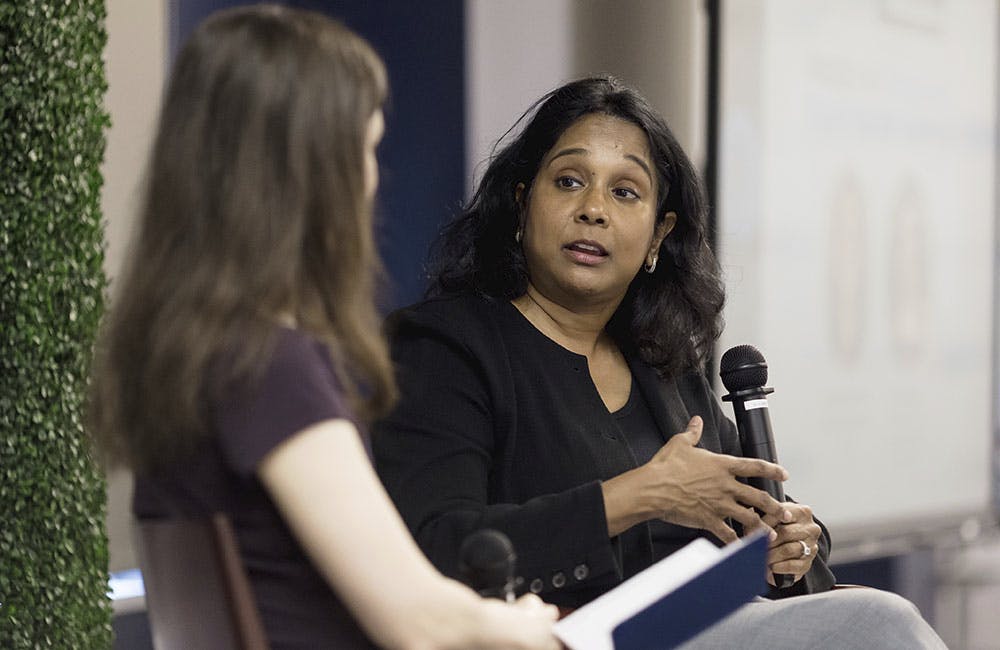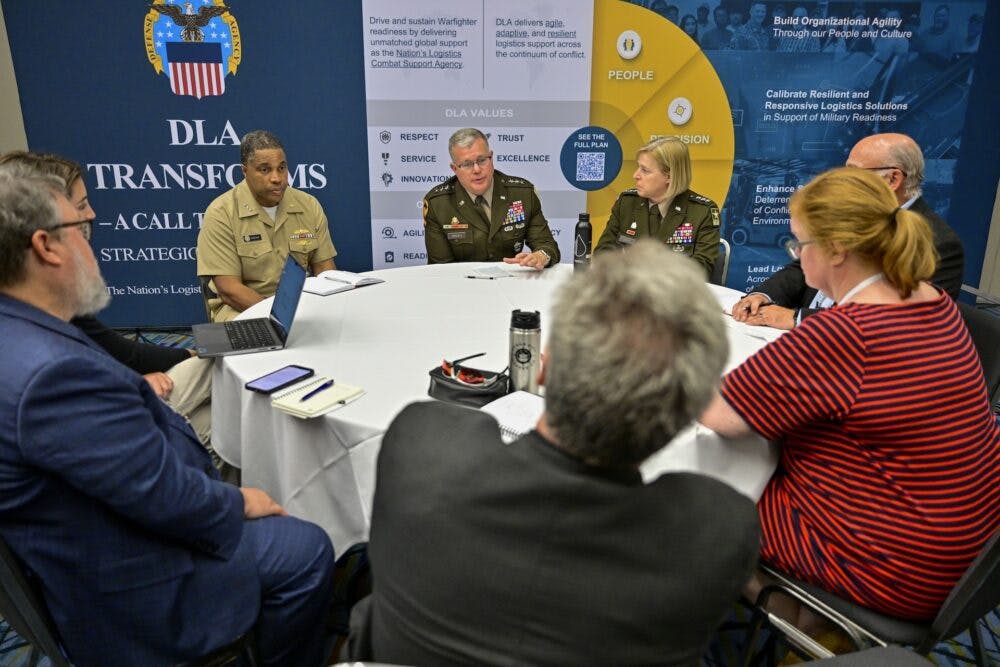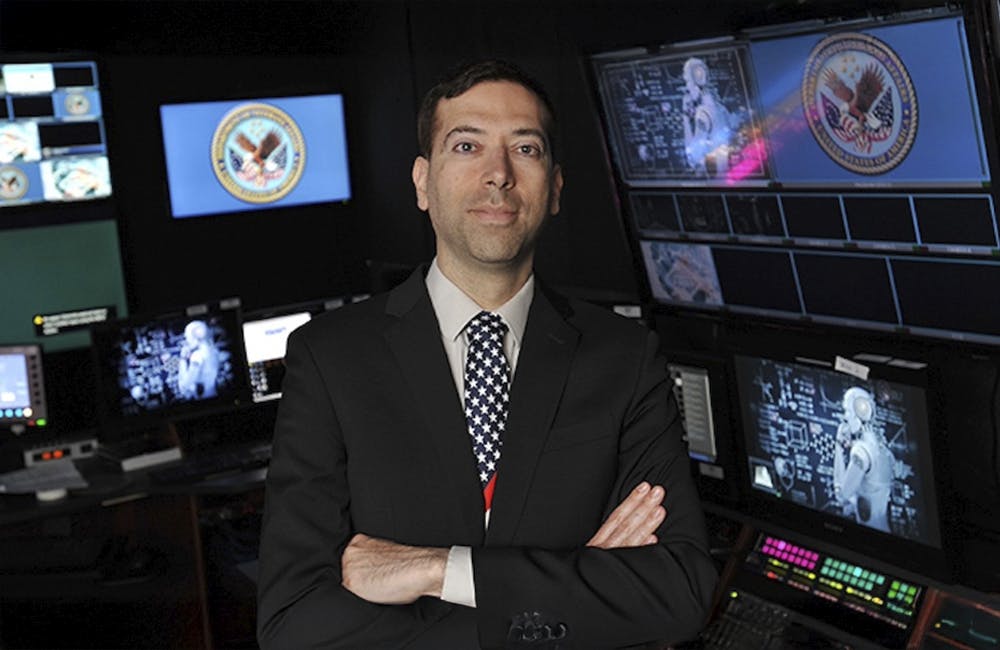Data, Automation Improve Federal Employee Engagement
Agencies are implementing data analytics tools and automated tech services to attract, retain and improve overall engagement among employees.

Federal agencies face considerable difficulties with data insights, especially with workforce shortages and budget constraints. Some teams around government found ways to navigate it all and, in turn, create beneficial experiences for its workforce.
Since 2002, the U.S. Office of Personnel Management has issued the Federal Employee Viewpoint Survey to measure how employees feel about their work and whether critical work experiences are conducive to success. The sheer amount of data from the survey results can be challenging for small teams to derive meaningful outcomes, said Trevor Norris, deputy assistant secretary for human resources and chief human capital officer at the Department of the Treasury during GovExec’s 2019 Federal Workforce and Management Summit last week.
“That really rots our ability to get to greater insights that I think have the ability to help us be really transformational about culture,” he added.
A tool at the National Institute of Diabetes and Digestive and Kidney Diseases called the Employee Viewpoint Survey Analysis and Results Tool (EVS ART) allows agency managers to more easily view OPM’s survey results that lead to more impactful employee engagement and performance strategies.
The tool works off of Excel, collecting and organizing data points from specific, measurable themes in the OPM survey, such as employee engagement and personal perspectives of agency work. It also produces heat maps with color-coded scoring to visualize areas of success and those that need improvement and sorts the survey results further by agency, subagency and organization levels.
”When you talk about low-value and high-value work, instead of analysts throughout all the agencies working tirelessly for weeks and months, you now have a report in five minutes and you get a report in any level of organization that has 10 or more [analysts],” said Camille Hoover, executive officer of the NIH subagency during last week’s event.
Compared to only 41% of the overall federal government workforce who “believe the results of [the] survey will make my workplace a better organization,” 74% of NIH employees agreed to that statement last year.
“You can see from year to year that we have focused and we have measurable results in how we were able to change,” Hoover said.
The tool has received positive recognition from OPM and is currently used at other government agencies.
The Department of Interior has also updated the way it listens and interacts with employees and potential applicants through automation. Starting Oct. 1 through DOI Careers, the agency implemented automated career pathing using video vignettes of careers and quizzes for applicants to take that link to USAJobs opportunities.
“It’s 20 of our mission-critical occupations and four high-density occupations, which is more than 50% of our workforce,” explained Jennifer Ackerman, deputy chief human capital officer and director of the Interior’s Office of Human Capital.
Eventually, the department will have all of its careers available through the platform for its 350 occupations and 2,400 areas in the U.S., she said, but the beginning interest-level engagement with the program has been higher than it’s been in quite some time for the agency. Within the first day of its launch, the automated update website received 9,000 hits — the most visits DOI Careers has had in two years.
“Tools and technology will allow us to turn our attention toward developing more frequent interactions with employees — whether it’s poll surveys, telephone surveys, town hall meetings with real-time back-and-forth. But also, to pay attention to different segments of the workforce, not just organizationally,” said the Treasury’s Norris.
Furthermore, acquiring and procuring tech to sort through data like this could improve how agencies prepare and handle, perhaps even mitigate, unexpected events that could harmfully disrupt employee engagement, such as the government shutdown earlier this year.
“Anyone you talk to who’s a Fed wants to make a difference — that’s why they come in. That’s why they stay,” Norris said.
“I think what’s most important is that while that’s in the background, we continue to do things to make sure the people in the organization know that we are communicating with them, we are telling them what’s happening in real time, they see senior leaders engaged and involved, and that we continue to keep doing things to try to help them grow and develop. We don’t get distracted with the engagement activity that we’re doing just because of the noise in the background,” he added.
This is a carousel with manually rotating slides. Use Next and Previous buttons to navigate or jump to a slide with the slide dots
-

NIST to Release New AI Cybersecurity Guidance as Federal Use Expands
NIST plans to release AI cybersecurity guidance within the year to support safe adoption as federal agencies expand use cases.
4m read -

CIA Adds Fourth Pillar to AI Strategy, CAIO Says
Lakshmi Raman says the new pillar marks a strategic shift toward embedding AI more deeply into the CIA’s day-to-day mission execution.
3m read -

FEHRM CTO Targets Two-Year Cloud Migration for Federal EHR
Lance Scott touts new EHR tech advancements, including cloud migration, expanded data exchange and AI integration to improve care delivery.
4m read -

AI Enables Coast Guard’s Workforce to Transform Operations
The Coast Guard’s Deputy CIO Brian Campo delves into the ways AI is pushing the service to rethink its core services, workforce and operations.
14m watch -

New Army Acquisition Plan Cites Autonomy, Predictive Analytics
Officials outline how the Army Transformation Initiative signals a broader shift toward efficiency with tech and acquisition reform.
4m read -

DOL Turns to Workforce Development to Maintain AI Superiority
DOL is bridging the AI skills gap through partnerships and upskilling to ensure future AI workforce readiness.
10m watch -

Trump’s Executive Order Spurs Federal Push for AI Literacy
Agencies are ramping up AI literacy efforts across the federal workforce and education systems after Trump's executive order on AI education.
5m read -

AWS Summit: A DOE National Lab Uses GenAI to Boost Efficiency
Lawrence Livermore National Lab launches a new generative AI tool to drive operational efficiency at the National Ignition Facility.
9m listen -

VHA’s AI Chief Led NIH’s New AI RFI
The agency's AI chief Gil Alterovitz helped develop a plan that hints at how NIH is charting the future of AI and biomedical research.
5m read -

DOE National Labs Launch New AI Tools for Operational Efficiency
The Energy Department's National Laboratories are using AI to increase operational efficiency and drive research efforts forward.
3m read -

White House AI Czar Outlines Industry's Role in Global AI Race
White House AI Czar David Sacks detailed the Trump administration's AI priorities and industry's role in growing the nation's AI economy.
3m read -

Software Factories Accelerate Federal Modernization Outcomes
IT leaders from Nutanix and SAIC explain how software factories streamline tech development, modernize legacy systems and accelerate adoption of emerging technologies like AI.
34m watch
















